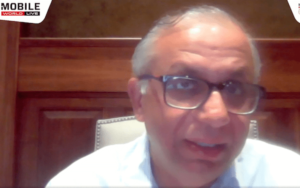IMT-2020 (5G) systems will incorporate a wealth of highly innovative technologies. These technologies will be applied in a wide variety of industry sectors.
Considering the great diversity of expected 5G applications, how could intellectual property (IP) licensing practices encourage widespread 5G deployment as well as ensure fair reward to the creators of patented technology?
This question was at the heart of last week’s ITU-NGMN conference on ‘licensing practices in 5G industry segments’, a conference which stimulated discussion around how licensing practices could balance the interests of the many companies holding a stake in 5G development and deployment.
5G is emblematic of the expanding influence of information and communication technologies (ICTs).
5G systems will support enhanced mobile broadband, massive-scale Internet of Things (IoT), and ultra-reliable and low latency communications for applications such as collaborative robotics, automated driving, and advanced virtual reality.
“There is a complete change of technology; the network has completely different requirements,” said the conference’s moderator, NGMN’s Stefan Engel-Flechsig. “This brings challenges that might lead to more complexity in intellectual property discussions.”
Participants called the ITU-NGMN conference the first step in a ‘trust-building exercise’ between prospective licensors and licensees. ITU and NGMN will continue to arrange the conference as an open platform to discuss the evolution of the IP marketplace as 5G deployment takes hold.
“This kind of conference enables both sides to see the other side clearly, which hopefully will lead to better discussions and more licensing and acceptance of positions on both sides,” said Michael Atlass, Qualcomm.
Collaboration in good faith to build transparency
5G is expected to support IoT, smart cities, healthcare, transport and much more. Many companies adopting 5G technologies will be relatively new to IP licensing in the ICT context, and many thousands of these companies are likely to be small-to-medium sized enterprises (SMEs).
These companies are calling for transparency and predictability in 5G IP licensing.
The ITU-NGMN conference debated the relative merits of patent pools and bilateral licensing in delivering this transparency and predictability.
“To be successful in licensing, you need to create a level playing field,” said Ben Beune, Sisvel.
The patent pool approach might be most valuable to marketplaces with many owners of standard-essential patents (SEPs), with bilateral licensing perhaps more appropriate in marketplaces home to few SEP owners with large patent portfolios, suggested Bill Geary, MPEGLA.
Geary added the qualification that the multiplicity of 5G applications would also pose challenges to the formation of pools.
“Considering the wide variety of 5G standards and the variety of products that likely would use these standards, the 5G set of standards could provide special challenges to the implementation of patent pools,” said Geary.
Patent pools aim to increase the efficiency of licensing practices, bringing benefits such as more transparency in licensing rates, more cost-efficient administration of royalty collection and distribution, and lower and more predictable transaction costs.
“But of course these benefits only arise if a patent pool has actually been successful in balancing stakeholders’ interests,” said Geary.
Many SEP owners are also implementers of SEP-encumbered technology, which conference participants said leads to a degree of inherent balance in stakeholders’ interests.
“Many contributors are also implementing the standards that they’re contributing to, making the need to create access to standardized technology on FRAND [fair, reasonable and non-discriminatory] terms and conditions a shared interest, which should help create a thriving market with many new entrants,” said Amy Marasco, Microsoft, Rapporteur for ITU studies on software copyright.
But many prospective 5G adopters will not own SEPs.
Here some of the conference participants proposed an issue for further study – an investigation of the potential for licensees to bargain collectively in IP licensing negotiations.
Enacting such a proposal may require new accommodations to be made by competition law.
The proposal was offered by Harald Wanjura, Deutsche Telekom, Co-Chair of NGMN’s IPR Forum: “Should we test the water with competition authorities to see whether licensees could come together and negotiate collaboratively in the same way as licensors do when part of patent pools?”
Improving the transparency of SEP licensing practices would be another important step towards the assurance of a level playing field, said conference participants.
It was said that greater transparency in this arena would be especially beneficial to licensees that might be new to the technologies being licensed.
Here Serge Raes, Orange, Chair of NGMN’s IPR Forum and Rapporteur for ITU studies on patents, proposed an issue for further study – the development of guidance with respect to the principles underlying the negotiation of license agreements, with particular emphasis on the non-disclosure agreements (NDAs) that accompany such negotiations.
“There is a recognition that there are different business practices regarding 5G SEP licensing in different industry segments,” said Raes. “Would it not be a first step towards transparency to have a document that summarize the principles under which a license should be drafted?”
Collaboration in good faith, a recurring theme throughout the conference, was said to be crucial in building common understanding between licensors and licensees.
“How could we best provide guidance on SEP licensing practices to newcomers to the technology?” asked Raes. “That’s part of the education and cross-fertilization between different industry segments – we have to recognize that some parties, if not entire industry segments, might not be familiar with the technology.”
Source of Article



